Our Namesake
A Note on Language
When you research the history of Fairfax County Public Schools (FCPS) during the period of 1870 to 1970, you will invariably encounter racially-charged language that is archaic and often problematic by modern standards. In particular, the primary source documents from the period use the terms “colored” and “Negro” to commonly describe students and schools. In the following text, the word colored is being used in its historically correct context.
From Fayetteville to Fairfax
Louise Reeves was born on October 23, 1893, in Fayetteville, North Carolina. She was the daughter of William J. Reeves, a prosperous cotton farmer, and Fannie Williams, a homemaker who raised the couple’s 13 children. Louise Reeves graduated from Livingstone College in Salisbury, North Carolina. In 1915, while teaching in Ivor, Southampton County, Virginia, she met her future husband, Romulus Cornelius Archer, Jr., an architect. The couple married and moved to Mr. Archer’s hometown, Norfolk, Virginia, then relocated to Washington, D.C. in 1922.
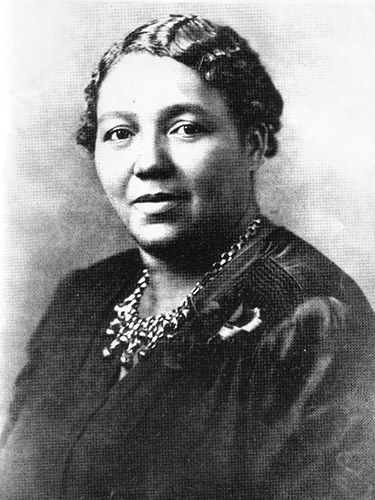
Shortly after moving to Washington, Mrs. Archer became a teacher with Fairfax County Public Schools. She taught for two years in Herndon at the Oak Grove School, a one-room schoolhouse for African-American children. Then, in 1924, she was appointed a teacher at the school for African-American children in the Town of Vienna known as the Vienna Colored School. In addition to her teaching duties, Mrs. Archer was also the school’s principal. She commuted to work daily from Washington, D.C., first by train and by trolley and later by automobile.
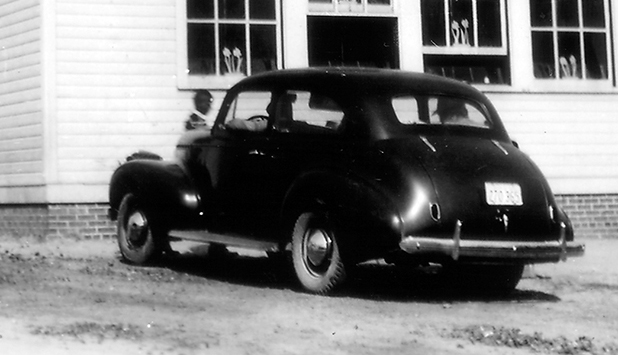
A Distinguished Career
Sadly, very few Fairfax County Public Schools (FCPS) records from the early 20th century have survived. The earliest records found to date related to Louise Archer are her reports from the 1924-25 school year of children who traveled to and from school on "the cars,” or electric trolley, that once operated in Fairfax County.

Another early record that has survived is Louise Archer’s Term Report for the Vienna Colored School for the 1927-28 school year. Mrs. Archer stated on the report that she had 20 children enrolled in her class in grades 5-7, 11 of whom were boys and 9 of whom were girls. At that time, classes were being held in a three-room schoolhouse that was once located at the intersection of Lawyers Road and Malcolm Road.
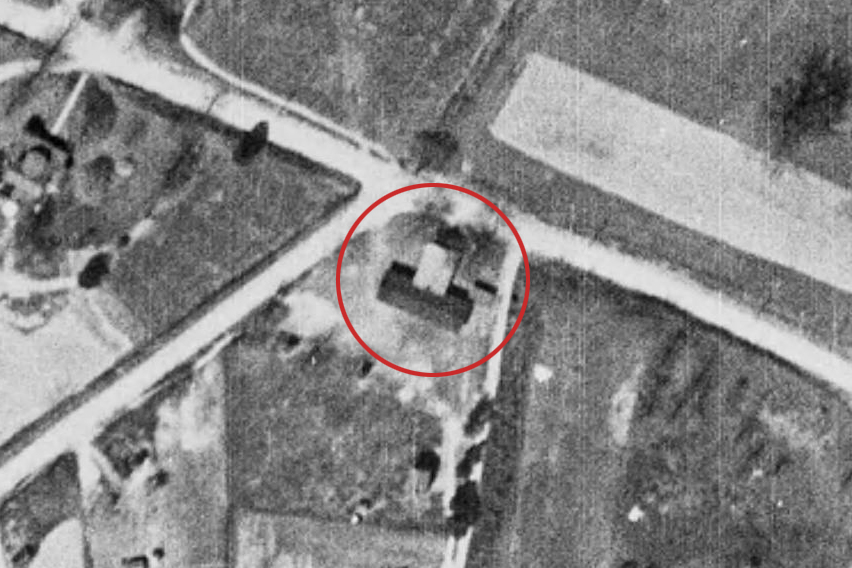
While serving as principal and teacher at the Vienna Colored School, Mrs. Archer continued to pursue higher education at Miner Teachers College, a prominent institution in Washington, D.C. for the training of black educators. This college was later absorbed into the University of the District of Columbia. She also studied at various times during the 1920s, 1930s, and 1940s, at Howard University in Washington, D.C., and Morgan State College in Baltimore, Maryland, from which she earned her Bachelor of Science in Education degree in 1943.
A Respected Educator
Historian Sylvia B. Taylor states in her book, “Louise Archer: The Educator and the School,” that “Mrs. Archer was a highly respected teacher. She treated her students with kindness and compassion, but she was also a firm disciplinarian. She insisted upon excellence from them. In addition to their studies, she tried to prepare the children for life by developing within them the ability to cope with problems, get along with others, and be responsible.”
Failure in school often discourages children so much that they fail in their life’s work. Then it is too late to do anything except be sorry. And we have a long, long time to be sorry. I am always sorry too when our children fail, but I would rather help them make good before it gets too late.
~ Louise R. Archer
In addition to the daily program of studies, Mrs. Archer taught her students sewing, embroidery, cooking, industrial arts, poetry, and music. One of the songs Mrs. Archer required students to memorize was “Lift Ev’ry Voice and Sing,” a song commonly referred to as the Black National Anthem. Sylvia Taylor wrote, “Mrs. Archer is also credited with having begun the practice of graduation exercises at the school. The first graduating class was in 1926 with a total of four graduates. The ceremony was held at First Baptist Church of Vienna, which was then on Lawyers Road.”
Mrs. Archer’s interest in her students was not confined to their learning abilities. She was also concerned about their well-being. Since the school had no cafeteria, she thought it was important to supplement the lunches children brought from home with a hot meal. This was not an easy task since the only stove available was the potbelly stove used for heating the room. However, Mrs. Archer became famous for the vegetable soups she and the students prepared on the potbelly stove during the winter months. The soup was especially welcomed by those who walked long distances to school, and those who had no lunch.
~ Sylvia B. Taylor
Improving Education
Throughout her career, Principal Archer strived to improve educational facilities for African-American children in Fairfax County. She frequently communicated with FCPS officials, requesting supplies and resources for her school.

Dear Mr. Williams... We have thirty-two pupils in my room and only thirty desks and seats, one of which I am using myself. May we have one straight chair for myself and two seats (with desks) for the pupils? The building is quite comfortable for us, and we feel very grateful to you for the same. The school work is moving on nicely, and we shall be glad to have you visit us when you will.... Yours very truly, Louise R. Archer, Vienna Col. School, February 3, 1925
Prior to 1954, African-American children in Fairfax County who wanted to continue their education beyond the seventh grade had to travel to a regional high school in Manassas, or pay tuition to attend high school in Washington, D.C. Pictured below is a letter from Louise Archer and other educators to the School Board in May 1932, requesting the introduction of the eighth grade for African-American children in FCPS.

During the late 1930s, Mrs. Archer and the Vienna Colored School League (an organization we would refer to today as the PTA) worked to have a new school for African-American children constructed in Vienna. That project came to fruition in 1939, when a three-room schoolhouse was built on Nutley Street.
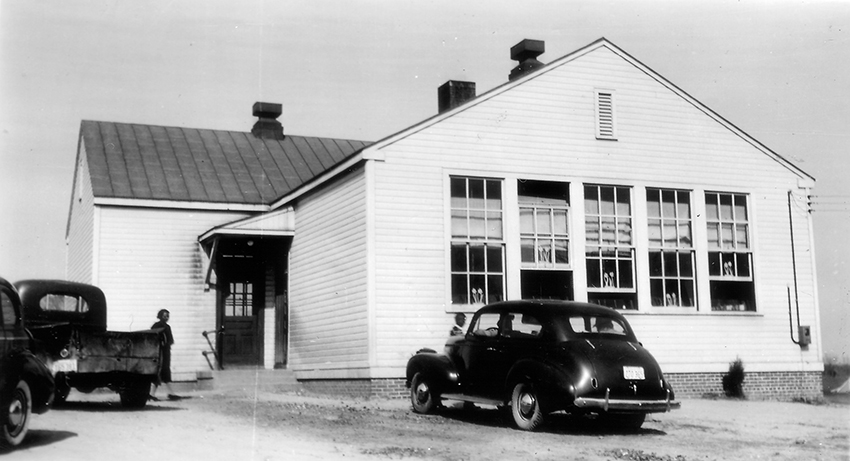
Her Love for Children
Many of the children who attended the Vienna Colored School lived a considerable distance away in communities such as Cartersville, East Woodford, Odricks Corner, and Woodentown. Recognizing that simply getting to and from school could be a barrier to education for many children, Principal Archer worked with the School League to purchase a used school bus. She also provided transportation daily for up to as many as twelve children at one time using her personal car. On the commute into work, Mrs. Archer would stop to pick up children in the East Woodford neighborhood near Dunn Loring and along Park Street in Vienna. After school, the children would pile back into her car for the trip home. Former students fondly recall occasions when Mrs. Archer would take small groups of students to her home in the city for an overnight or weekend trip. The children, many of whom had never been to the city before, would go sightseeing or take in a movie.

A Lasting Tribute
During spring vacation in 1948, Principal Archer traveled to Durham, North Carolina to visit family. She fell ill and passed away on April 1, 1948, and was buried in Arlington National Cemetery five days later.
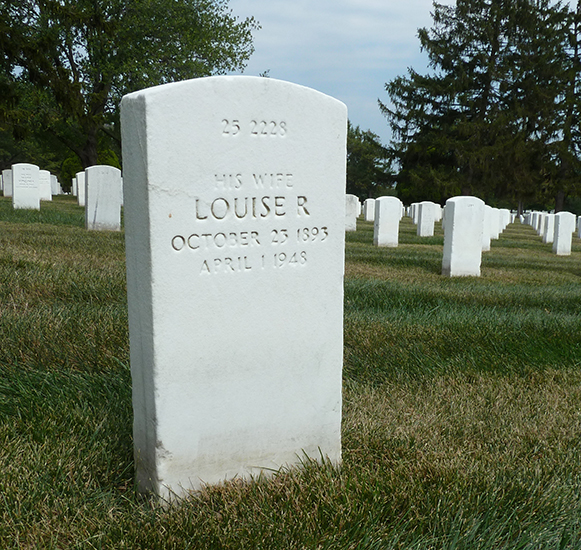
Mrs. Archer’s death was a tremendous shock to the community. Soon after news of her passing had spread, parents and former students petitioned the School Board to rename the Vienna Colored School in her honor. Their petition was granted and our school became formally known as the Louise Archer School on April 21, 1948.
It is with very profound sorrow that the Fairfax County School Board records the death of Mrs. Louise R. Archer, Principal of the Vienna Colored School, who passed away suddenly on Thursday morning, April 1, 1948, while visiting relatives in North Carolina. Mrs. Archer faithfully served the schools of Fairfax County, Virginia, first as a teacher in the Herndon Colored School for two years and then as principal of the Vienna Colored School for a period of twenty-four years. During this long period of service she was always energetic, cheerful, and forceful in her leadership. A large measure of her success can be attributed to the fact that she always strove to develop the better traits of character and good citizenship in her pupils along with their education. Fairfax County and this Board have suffered a real loss in her passing but the results of her fine work will continue for many years to come.
Fairfax County School Board Resolution, April 6, 1948
Sharing Memories
Mrs. Archer left an indelible impression on her students, colleagues, and families. In February 2020, we interviewed three former students of Mrs. Archer who shared their remembrances of her.
Mrs. Archer is still remembered with a great deal of affection. She has left in the minds and hearts of those who knew her an unforgettable example of dedication, commitment, and service to mankind. ~ Sylvia B. Taylor
Biographical Sources
Taylor, Sylvia B. Louise Archer: The Educator and the School. Fourth Edition. Sylvia B. Taylor, 2016. “Louise Archer: The Educator and the School” was originally printed in 1976 as a spiral bound historical account of Mrs. Archer as principal and the school's history, as told to Ms. Taylor by former students, parents, and residents of Vienna. Since then, it has been the foundational source of information about Mrs. Archer and the school's history for the students at Louise Archer School. Over the years, it has been revised as new information became known.
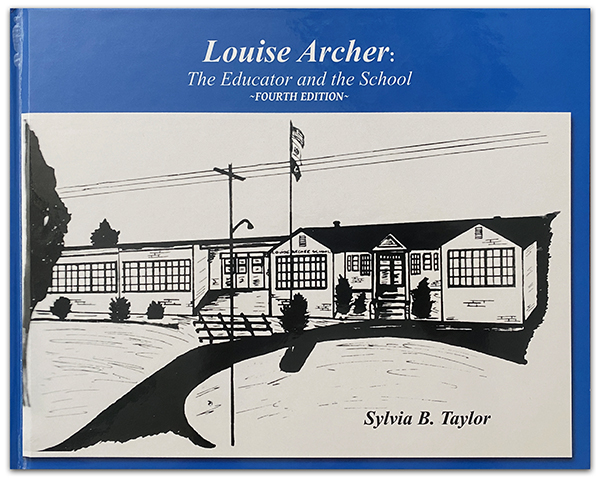
1917: U.S. World War I Draft Registration Cards, Virginia, Norfolk City, District 2, Draft Card A for Romulus Cornelius Archer, Jr. Home address: 2517 Hale, Norfolk, Virginia; Architect employed by the firm of Archer & Archer at 654 Church Street.
1920: U.S. Federal Census, Virginia, Norfolk (Independent City), Norfolk Monroe Ward, E.D. 121, Sheet 7B, Household 152: Romulus C. Archer, head, age 29, born in Virginia, an architect and civil engineer; Louise Archer, wife, age 27, born in North Carolina, no occupation; Pearl E. Reeves, sister-in-law, age 16, born in North Carolina, no occupation.
1923: Washington, District of Columbia, City Directory: Romulus C. Archer, Jr., architect, 1449 Florida Avenue, NW.
1926: Washington, District of Columbia, City Directory: Romulus C. Archer, Jr., architect, 1937 14th Street NW.
1931: Washington, District of Columbia, City Directory: Romulus C. Archer, Jr., 759 U Street, NW; architect; Louise Archer, spouse.
1940: U.S. Federal Census, District of Columbia, Police Precinct 2, Tract 34, E.D. 1-30, Sheet 2A, 215 Florida Avenue; Romulus Archer, head, age 49; Louise R. Archer, wife, age 46.
1942: U.S. World War II Draft Registration Cards, District of Columbia; Amedeo, Basile – Auzotis, Christos; April 27, 1942 – Romulus C. Archer, Jr.; Place of Residence: 215 Florida Avenue, NW, Washington, D.C.; Name of Person Who Will Always Know Your Address: Louise R. Archer. Employer: In business for self.
1948: North Carolina, Death Certificates, Durham, 1948, April: Louise Archer, about age 60, a teacher. Born in Fayetteville, North Carolina, on October 23. Daughter of William J. Reeves and Fannie Williams. Husband: R. C. Archer, Jr. Date of Death: April 1, 1948 in Durham, North Carolina. Cause: Acute Myocardial Failure.
1948: U.S. Veterans’ Gravesites, ca. 1775-2006, www.ancestry.com. Louise R. Archer, wife of veteran. Interment date: April 6, 1948 at Arlington National Cemetery, Section 25, Site 2228.
1948: Fairfax County School Board Minutes, April 6, 1948: A letter from Mrs. Eliza Hawkins was presented asking whether or not it would be possible to arrange for the children of the Vienna Colored School to attend the funeral of Mrs. Louise R. Archer, the principal, and also regarding a memorial for her. Superintendent Woodson advised that he had authorized the closing of the Vienna Colored School early enough so that the teachers and those pupils who wished might attend Mrs. Archer’s funeral. He had also given other colored teachers in the county permission to go to the funeral provided they could make satisfactory arrangements for the continued operation of their schools. This action met with the approval of the Board. It was suggested that the Vienna Colored School might be named for Mrs. Archer as a memorial to her should the community so wish. Superintendent Woodson recommended and the Board approved that Mrs. Mabel T. Mack, a teacher at the Vienna Negro School, be appointed acting principal beginning April 5 for the remainder of the current session, the supplement to her base salary to be on the same basis as that approved for Mrs. Archer which would be $95.70 for the remainder of the session. Mr. Shands offered the following resolution: Whereas, it is with very profound sorrow that the Fairfax County School Board records the death of Mrs. Louise R. Archer, Principal of the Vienna Colored School, who passed away suddenly on Thursday morning, April 1, 1948, while visiting relatives in North Carolina. Mrs. Archer faithfully served the schools of Fairfax County, Virginia, first as a teacher in the Herndon Colored School for two years and then as principal of the Vienna Colored School for a period of twenty-four years. During this long period of service she was always energetic, cheerful, and forceful in her leadership. A large measure of her success can be attributed to the fact that she always strove to develop the better traits of character and good citizenship in her pupils along with their education. Fairfax County and this Board have suffered a real loss in her passing but the results of her fine work will continue for many years to come. Therefore, Be It Resolved, that the Secretary of the Fairfax County School Board record this minute upon the proceedings of the Board and that a copy thereof be sent to her bereaved husband.

